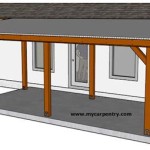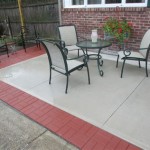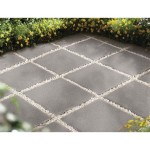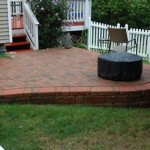Creating The Perfect Flagstone Patio Design
Flagstone patios offer a timeless and elegant appeal, providing a durable and aesthetically pleasing outdoor living space. Designing the perfect flagstone patio, however, requires careful consideration of various factors, encompassing material selection, layout planning, and installation techniques. A well-designed flagstone patio not only enhances the visual appeal of a property but also increases its functionality and potentially its value.
The creation of a successful flagstone patio involves a multi-stage process, starting with conceptualization and progressing through detailed planning, material procurement, and ultimately, the physical construction. Each stage presents unique challenges and opportunities to optimize the final result, ensuring a patio that is both beautiful and functional for years to come.
Choosing the Right Flagstone
The selection of flagstone is a critical first step in the patio design process. Flagstone is a generic term for sedimentary rock that splits easily into slabs, typically sandstone, slate, limestone, or quartzite. Each type of flagstone possesses unique characteristics regarding color, texture, durability, and cost. The chosen type of flagstone will significantly influence the overall aesthetic and longevity of the patio.
Sandstone, for example, is a popular choice due to its warm, earthy tones and relatively smooth surface. It is generally more porous than other types of flagstone, making it susceptible to staining if not properly sealed. Slate, on the other hand, offers a more sophisticated and contemporary look with its dark, often subtly shimmering appearance. Slate is generally more durable and resistant to staining than sandstone, but it can be more brittle and prone to chipping under heavy impact. Limestone provides a classic, natural look with a range of colors from light beige to gray. It is a relatively soft stone, which can make it easier to work with but also more susceptible to scratching and weathering over time. Quartzite is one of the most durable options, known for its strength and resistance to weathering. It often features a subtle sparkle and comes in various colors, making it a versatile choice for various design aesthetics.
Beyond the type of stone, the size and shape of the flagstone pieces are also important considerations. Larger, more uniform pieces can create a more formal and structured look, while smaller, irregularly shaped pieces contribute to a more rustic and naturalistic aesthetic. The thickness of the flagstone is also crucial, particularly for patios intended for heavy foot traffic or furniture. Thicker flagstones are more durable and less likely to crack or shift over time.
The color palette of the flagstone should complement the surrounding landscape and architecture of the property. Consider the color of the house, the existing hardscaping elements, and the types of plants in the garden. A cohesive color scheme will create a harmonious and visually appealing outdoor space.
Before making a final decision, it is advisable to obtain samples of different flagstone types and arrange them in the intended patio space. This allows for visual assessment under different lighting conditions and helps determine which stone best suits the overall design concept.
Planning the Layout and Design
The layout and design of the flagstone patio are crucial for both aesthetic appeal and functionality. A well-planned layout optimizes the available space, enhances traffic flow, and creates a comfortable and inviting outdoor living area. Careful consideration should be given to the size and shape of the patio, its relationship to the surrounding landscape, and the intended use of the space.
Start by determining the desired size and shape of the patio. Consider the available space in the yard, the size of the house, and the intended use of the patio. A small patio may be suitable for a cozy seating area, while a larger patio can accommodate outdoor dining, lounging, and entertaining. The shape of the patio can be irregular, following the natural contours of the landscape, or more formal, with straight lines and symmetrical patterns.
Next, consider the relationship of the patio to the surrounding landscape. Position the patio in a location that offers optimal sunlight exposure, views, and privacy. Consider the proximity to trees, shrubs, and other plants, ensuring that the patio is not overly shaded or encroached upon by vegetation. If necessary, trim or relocate existing plants to create a clear and unobstructed space for the patio.
Design the patio with the intended use in mind. If the patio is intended for outdoor dining, ensure that there is sufficient space for a table and chairs. If it is intended for lounging, consider incorporating comfortable seating areas, such as couches, chairs, and hammocks. If the patio is intended for entertaining, consider incorporating features such as an outdoor kitchen, a fire pit, or a bar area.
Create a detailed plan of the patio layout, including the dimensions, shape, and placement of the flagstones. Consider the pattern in which the flagstones will be laid, such as a random pattern, a running bond pattern, or a circular pattern. A well-planned layout will minimize waste and ensure a cohesive and visually appealing final product.
Incorporate features such as pathways, planting beds, and retaining walls to enhance the overall design of the patio. Pathways can connect the patio to other areas of the yard, such as the house, the garden, or the driveway. Planting beds can add color and texture to the patio, creating a more inviting and naturalistic atmosphere. Retaining walls can create level surfaces on sloping sites and add architectural interest to the patio design.
Proper Installation Techniques
Proper installation is essential for the longevity and stability of a flagstone patio. A poorly installed patio is prone to shifting, cracking, and weed growth, requiring costly repairs and maintenance. Following best practices for site preparation, base construction, and stone laying will ensure a durable and aesthetically pleasing result.
Begin by preparing the site. Excavate the area to a depth of at least 6-8 inches, removing any topsoil, vegetation, and debris. Compact the subgrade thoroughly using a plate compactor to create a stable base. This compaction prevents settling and ensures a level surface for the patio.
Next, construct a base layer of compacted gravel. The gravel base should be at least 4-6 inches thick and composed of crushed stone ranging in size from coarse to fine. This layer provides drainage and prevents the flagstones from settling into the soil. Compact the gravel base thoroughly using a plate compactor.
Add a layer of sand over the compacted gravel base. The sand layer should be approximately 1-2 inches thick and provide a level and consistent surface for the flagstones. Use a screed board to level the sand layer, ensuring a smooth and even surface. This layer allows for minor adjustments in height when laying the flagstones.
Lay the flagstones in the desired pattern, leaving gaps of approximately 1-3 inches between each stone. Use a rubber mallet to gently tap the flagstones into place, ensuring that they are level with each other. Check the level of the flagstones frequently using a spirit level and adjust as necessary. This step ensures a stable and even surface for walking and furniture placement.
Fill the gaps between the flagstones with polymeric sand or gravel. Polymeric sand is a mixture of sand and polymers that hardens when wetted, creating a durable and weed-resistant joint. Gravel provides a more natural and rustic look, but it is more prone to weed growth. Compact the infill material thoroughly using a broom or a plate compactor. This step locks the flagstones in place and prevents movement over time.
Seal the flagstone patio with a quality stone sealant to protect it from staining, weathering, and weed growth. Apply the sealant according to the manufacturer's instructions, ensuring that all surfaces are thoroughly coated. Reapply the sealant periodically to maintain its protective properties. Sealing prolongs the life of the flagstone and maintains its appearance.
Consider hiring a professional landscape contractor for assistance with the design and installation of the flagstone patio. A professional contractor will have the experience, knowledge, and equipment necessary to ensure a successful and long-lasting result. They can also provide valuable advice on material selection, layout design, and maintenance techniques.
By carefully considering these factors and following best practices, it is possible to create a perfect flagstone patio design that enhances the beauty and functionality of any outdoor space. The selection of appropriate materials, careful planning of the layout, and proper installation techniques are all crucial for achieving a durable, aesthetically pleasing, and enjoyable outdoor living area.

Flagstone Patio Ideas Cost How To Install Landscaping Network

How To Build A Flagstone Patio In One Day Merrypad

Flagstone Patio Ideas Cost How To Install Landscaping Network
:strip_icc()/101617128-0e66ceedb766432d87beaef6e6a3dea3.jpg?strip=all)
How To Install A Flagstone Patio Our Step By Guide

How To Build A Flagstone Patio Greenacresodfarm Com

Flagstone Patio Ideas Cost How To Install Landscaping Network

Flagstone Patio Ideas Cost How To Install Landscaping Network

How To Lay Flagstone Installation Guide Landscaping Network
Stone Patios Ideas Benefits And More Haynes Materials

How To Install A Flagstone Patio Step By
Related Posts








